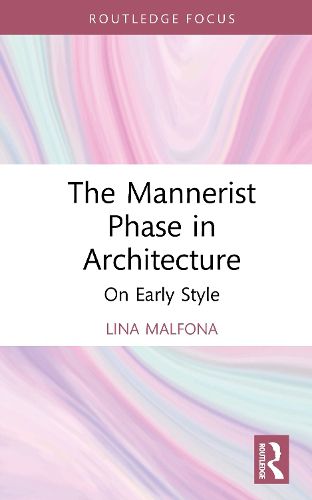Readings Newsletter
Become a Readings Member to make your shopping experience even easier.
Sign in or sign up for free!
You’re not far away from qualifying for FREE standard shipping within Australia
You’ve qualified for FREE standard shipping within Australia
The cart is loading…






This book frames mannerism as an inescapable stage in the creative process. The mannerist phase is usually an adolescent stage of language, preceding the consolidation of thought. It is that period, as fertile as it is anguished, in which each author engages in a dialogue with his or her past, reinterpreting or completely transforming it. The mannerist phase is that period when architects design spaces, not yet knowing what it means to design places.
The mannerist condition can be short-lived or protracted until it becomes systemic. In all cases, it is a period of research experienced by architects who are also intellectuals, that is, architects who operate between the practice of making and the elaboration of a personal design philosophy, within a perspective in which history, theory and criticism are intertwined. In this sense, the mannerist condition can also be defined as the style of the academic thought.
The book explores the work of many authors, analyzing their relationship to history and how they managed to emerge from its shadow. Of interest to academics, scholars and students exploring the theory of architecture, this book offers an unconventional, transtemporal reading of mannerism, where facts, events, and images belonging to different times and spaces are juxtaposed to generate a series of temporal paradoxes.
$9.00 standard shipping within Australia
FREE standard shipping within Australia for orders over $100.00
Express & International shipping calculated at checkout
This book frames mannerism as an inescapable stage in the creative process. The mannerist phase is usually an adolescent stage of language, preceding the consolidation of thought. It is that period, as fertile as it is anguished, in which each author engages in a dialogue with his or her past, reinterpreting or completely transforming it. The mannerist phase is that period when architects design spaces, not yet knowing what it means to design places.
The mannerist condition can be short-lived or protracted until it becomes systemic. In all cases, it is a period of research experienced by architects who are also intellectuals, that is, architects who operate between the practice of making and the elaboration of a personal design philosophy, within a perspective in which history, theory and criticism are intertwined. In this sense, the mannerist condition can also be defined as the style of the academic thought.
The book explores the work of many authors, analyzing their relationship to history and how they managed to emerge from its shadow. Of interest to academics, scholars and students exploring the theory of architecture, this book offers an unconventional, transtemporal reading of mannerism, where facts, events, and images belonging to different times and spaces are juxtaposed to generate a series of temporal paradoxes.